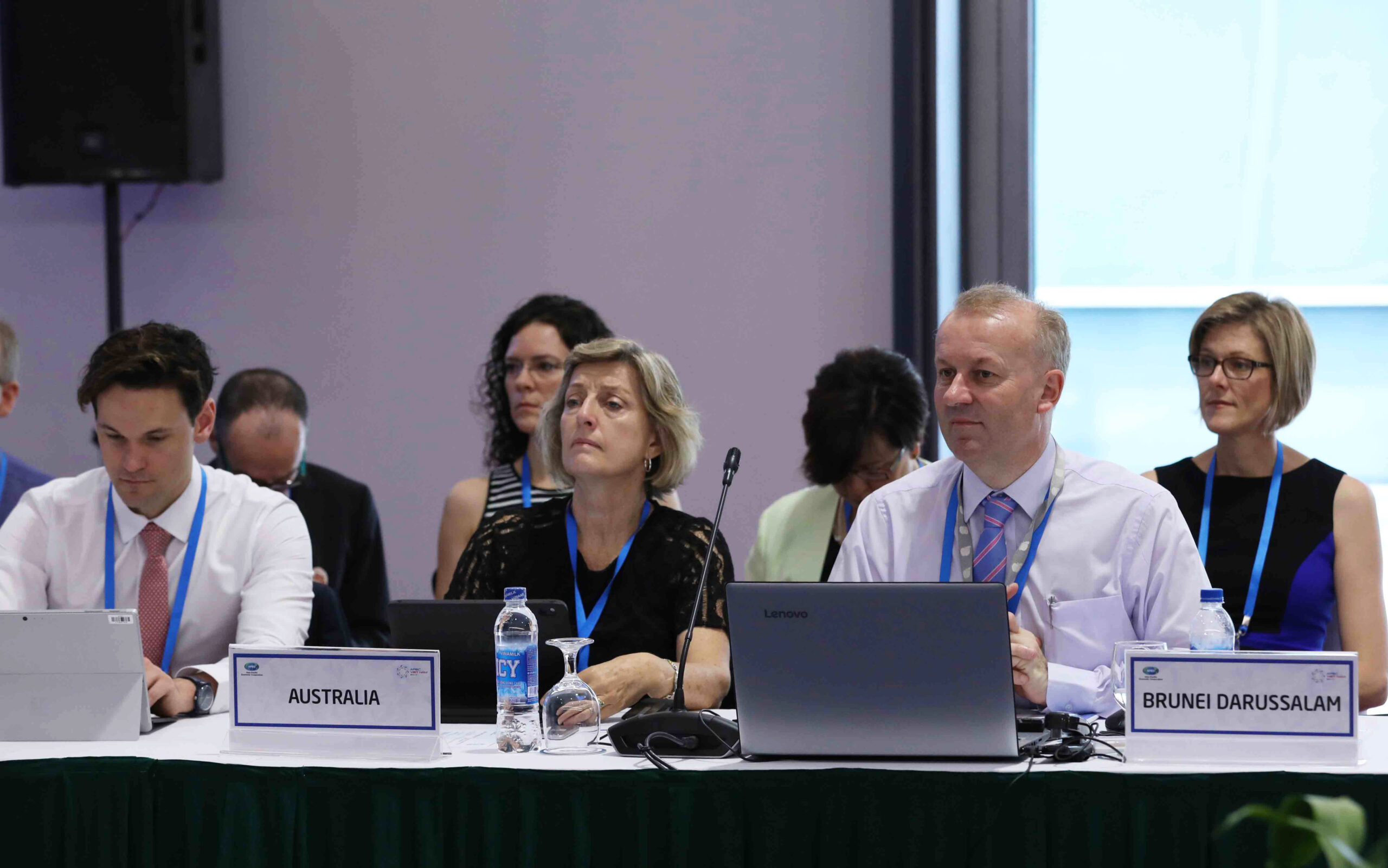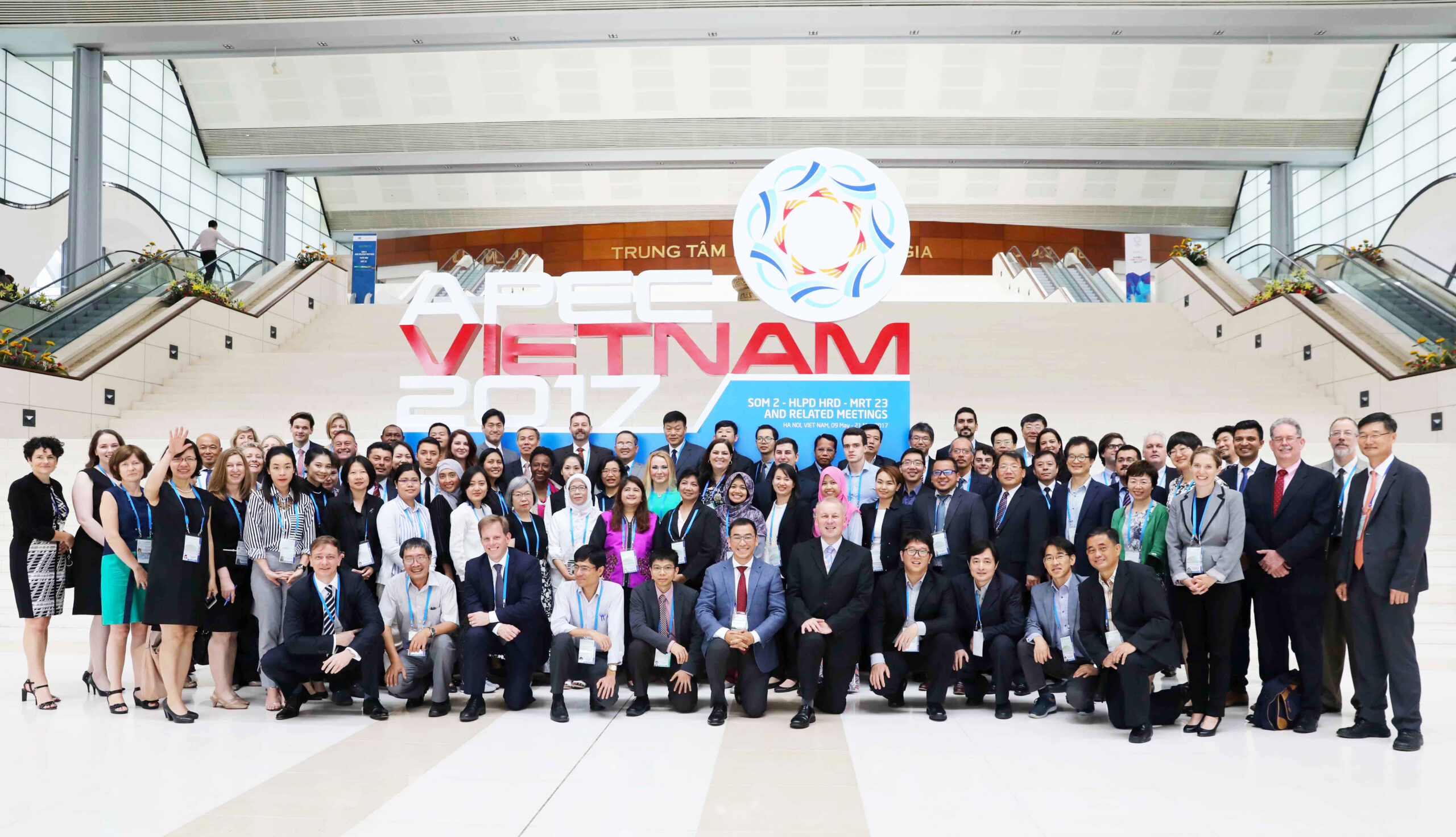The APEC Food Safety Co-operation Forum
Pesticide Maximum Residue Levels Compliance and Enforcement
Context
Across APEC member economies, the agricultural sector feeds 2.9 billion people, employs an estimated 20% of the population, and represents a market of approximately USD $1.7 trillion for value-added agricultural products. The perishability of many agricultural products is a key reason why efficient cross-border trade policies and procedures are a priority, yet member economies must also maintain strict protections to ensure that food traded throughout the region is safe and healthy. In 2007 APEC formed the Food Safety Cooperation Forum (FSCF) under the Sub-Committee for Standards and Conformance to facilitate increased cross-border food trade and encourage adherence to international standards while ensuring that food products are safe. The FSCF supports learning, capacity-building, and improved dialogue to foster greater consistency in food safety standards through the APEC region.
Greater convergence of member economy regulations and alignment with international standards can help facilitate increased trade in safe foods in the APEC region. One element for food safety is the pesticide Maximum Residue Level (MRL), which refers to the maximum amount of pesticide residues that are allowed by regulation on treated food. International standards in MRLs are established by the Codex Alimentarius Commission (CAC) following their adoption by the Codex Committee on Pesticide Residues (CCPR) based upon the scientific recommendations made jointly by The Joint FAO/WHO Meeting on Pesticide Residues (JMPR). However, the Codex Alimentarius does not govern; its standards are voluntary and member economies ultimately regulate the MRL levels for their individual markets.
In 2009, the FSCF agreed to the need to adopt regulatory frameworks consistent with international standards and identified MRLs for pesticides as a key area for greater harmonization of food standards in the APEC region.

Photo Credit: APEC Secretariat
MRL Disharmony Imposes Real Costs on Farmers
In 2015, Canada registered the use of a new herbicide for canola that could prevent significant yield losses by eliminating an invasive weed without harming the canola.
Despite the regulatory authorization of this herbicide, an MRL had not yet been set for this chemical in several of Canada’s most important export markets. Growers were presented with a stark choice: they could improve productivity at the cost of losing key export markets. The Canola Council of Canada estimated the value of losses alone, based upon yield losses and market losses, at about $390 million USD over four years until key trading economies established new MRLs for the herbicide and trade resumed.
Main Characteristics of the Cooperation
This workstream was led by Australia and resulted in development and agreement of Import MRL Guideline for Pesticides, which proposes several approaches for aligning MRLs among APEC economies in cases where economies take different approaches to MRL setting, compliance, and recognition. The Import MRL Guideline was agreed to as a tool to align assessment methodologies in considering import MRL requests. The goal of the Guideline is to promote greater regulatory convergence of pesticide MRLs along with greater alignment with international standards to ultimately reduce regulatory burdens and facilitate trade. It is an important way forward in managing this issue and was subsequently noted by some members within the World Trade Organization (WTO) Sanitary Phytosanitary (SPS) Committee as an important regional reference. Led by Australia, APEC food safety regulatory agencies developed two tools to assist the harmonization of import MRLs for pesticides. The APEC Compendium on Government Administration in Setting Maximum Residue Limits for Pesticides, and the APEC Import Maximum Residue Limits for Pesticides Application Form were published as APEC documents in 2019.
The United States is also engaged in ongoing capacity building efforts to promote the use of the Guideline best practices with APEC economies in Latin America. A capacity-building webinar hosted by the United States Environmental Protection Agency on the Australia Import MRL Guideline for Pesticides included more than 200 participants from more than 15 economies in Central and South America, with interest expressed in support for MRL programs in economies throughout Central America and the Andean region.
Building on these important efforts, the United States also initiated a workstream on Compliance and Enforcement of pesticide MRLs which commenced with a workshop in October 2018, with the following objectives:
- explore relationships between missing and disharmonized MRLs and linkages to MRL violations, trade, and other economic and social factors,
- examine the private sector role in maintaining high levels of MRL compliance, and
- share information on how APEC economies enforce MRLs and manage violations.
Through a collaborative approach, participants from across APEC member economies identified future work to:
- develop a compendium of MRL enforcement practices to facilitate compliance,
- develop guidance on best practices for MRL enforcement, and
- develop risk communication tools to explain relationships between MRLs, food safety, and trade.
The United States led a second workshop in December 2020 focused on the impact of MRL violations on regional food security and trade; import tolerance-setting and transition periods in preventing unnecessary MRL trade violations and process efficiencies such as crop groups; risk-based inspection systems; post-border market surveillance programs; and an update on APEC regional harmonization efforts. Motivated by the APEC Food Safety Risk Communication Framework and Guidelines led by Australia and the FSCF, published in 2022, a United States led APEC workshop in August 2022 focused on foundations of risk communication and the impacts it has for food safety, and trade, relating to MRLs. Economies discussed real world MRL risk communication scenarios to highlight the complexities and importance of risk communication relating to MRLs among APEC Economies. Part two of this series will be held soon with a focus on civil society’s role in MRL risk communication and how APEC Economies communicate risk to the public when dealing with pesticide residues.

Photo Credit: APEC Secretariat
Process Efficiency: Crop Groups
Food commodities sharing similar characteristics can be grouped together for purposes of establishing tolerance levels for multiple commodities simultaneously.
In the United States for example, Crop Group 25 (the Herb group) consisting of dried and fresh basil leaves and mint includes 418 separate commodities; the Crop Group 26 (the Spice Group) consisting of crops like dill seed or celery seed, includes 209 separate commodities.
This allows for registration of pesticides with smaller data sets across similar crops and eliminates the need to establish residue data for every food or feed crop for every pesticide. This also reduces burdens of testing and regulatory burdens on public officials and growers alike and helps smaller growers access markets.
Assessment
This work has resulted in growing awareness of key issues related to pesticide MRL compliance and has helped to advance compliance with pesticide MRL standards in the region. For example, overly complex and burdensome MRL procedures that lead to administrative non-compliance far outweigh the incidences of goods testing above established MRLs. This indicates a possible procedural barrier that could be solved by increased public private dialogue to better align regulations and administrative steps to needs and practical limitations.
After the development and endorsement of the Guideline, Australia and the United States established pilot programs to accept pesticide import tolerance applications from other APEC economies. The Import Tolerance Project enables the United States to rely upon data reviews from a domestic authority, the Joint FAO/WHO Meeting on Pesticide Residues, or the European Food Safety Authority rather than mandating a standard review by the United States. Instead, the United States Environmental Protection Agency (US EPA) reviews the detailed report from one of the competent authorities listed above, with tolerance levels accepted based upon the MRL from the Codex, the European Union, or the exporting economy.
Since implementing this pilot project, the United States saw a reduction in the amount of time required to establish a new MRL, and a reduction in the administrative costs associated with developing new MRLs. The US EPA observed an average reduction of 3 weeks of labour time for United States Environmental Protection Agency (US EPA) risk examiners. Canada is also in the early stages of considering the feasibility of specifying import MRLs based on JMPR or domestic authority reviews. Results are not yet available.
Beyond the APEC region, the Association of Southeast Asian Nations (ASEAN) through the US – ASEAN Maximum Residue Level Pilot Project, has begun to explore the APEC Import Maximum Residue Level Guidelines as a possible basis for establishing a region-wide import tolerance programme as well as broader acceptance of member economy MRL standards for importation, particularly of agricultural products not grown domestically. If undertaken, this level of harmonization will be expected to reduce the time, costs, and administrative burdens associated with MRL disharmony and enhance cross-border agricultural trade throughout the region.

Photo Credit: APEC Secretariat
Next Steps
As next steps, APEC economies will work together to produce best practices guides on MRL regulatory regime transitions, including how to effectively manage transition periods while protecting food safety and minimizing negative impacts on trade. An initiative to share more information about MRL violations, perceptions of pesticide MRLs, and risk communication related to MRLs in the region is also being undertaken.
Date: This case study was written in 2021 and finalised in 2022.